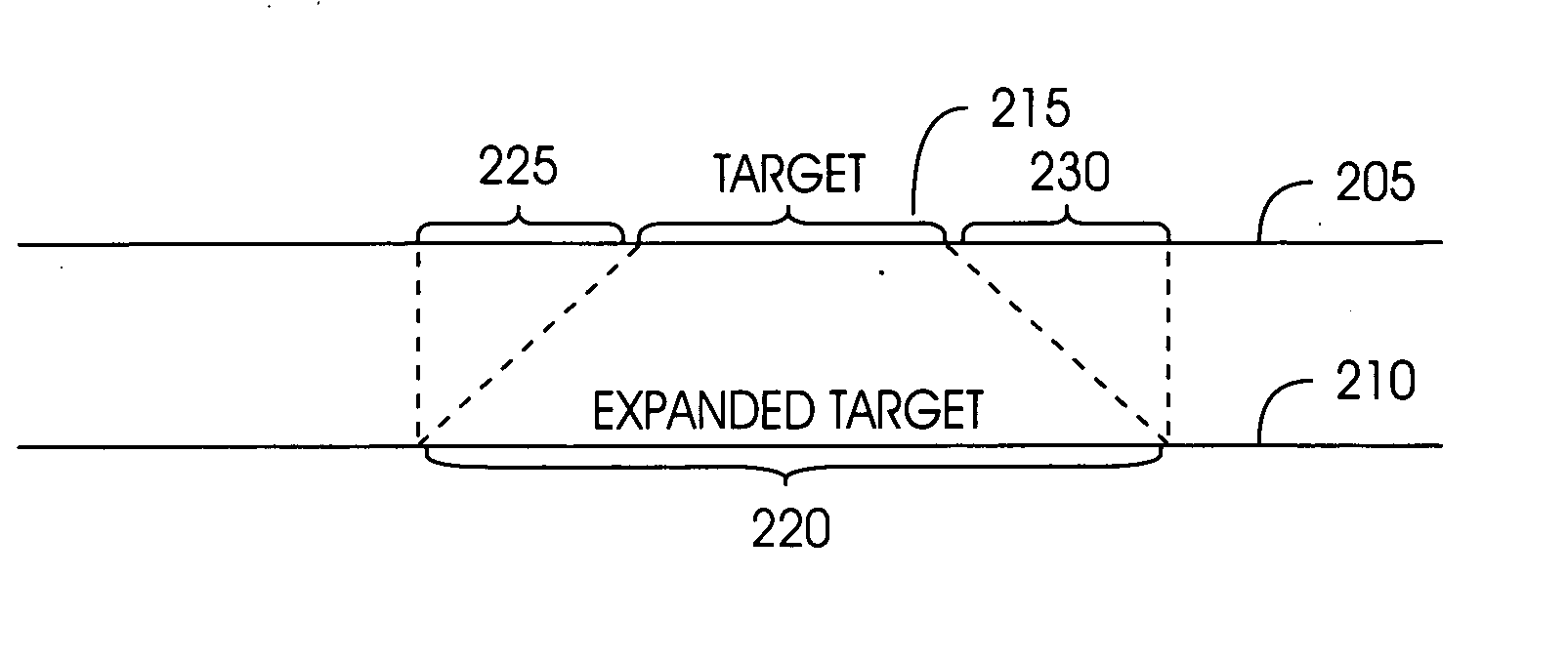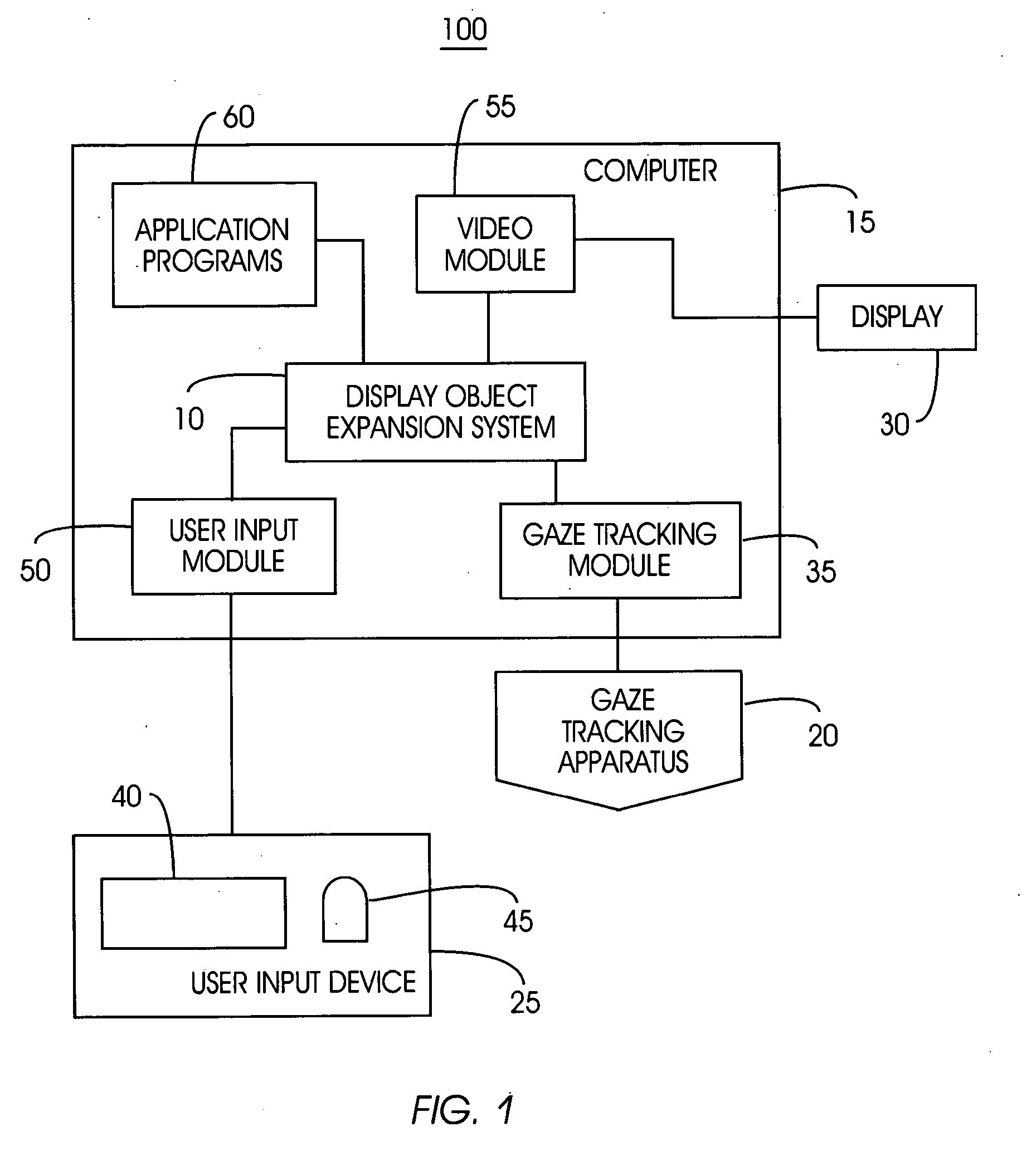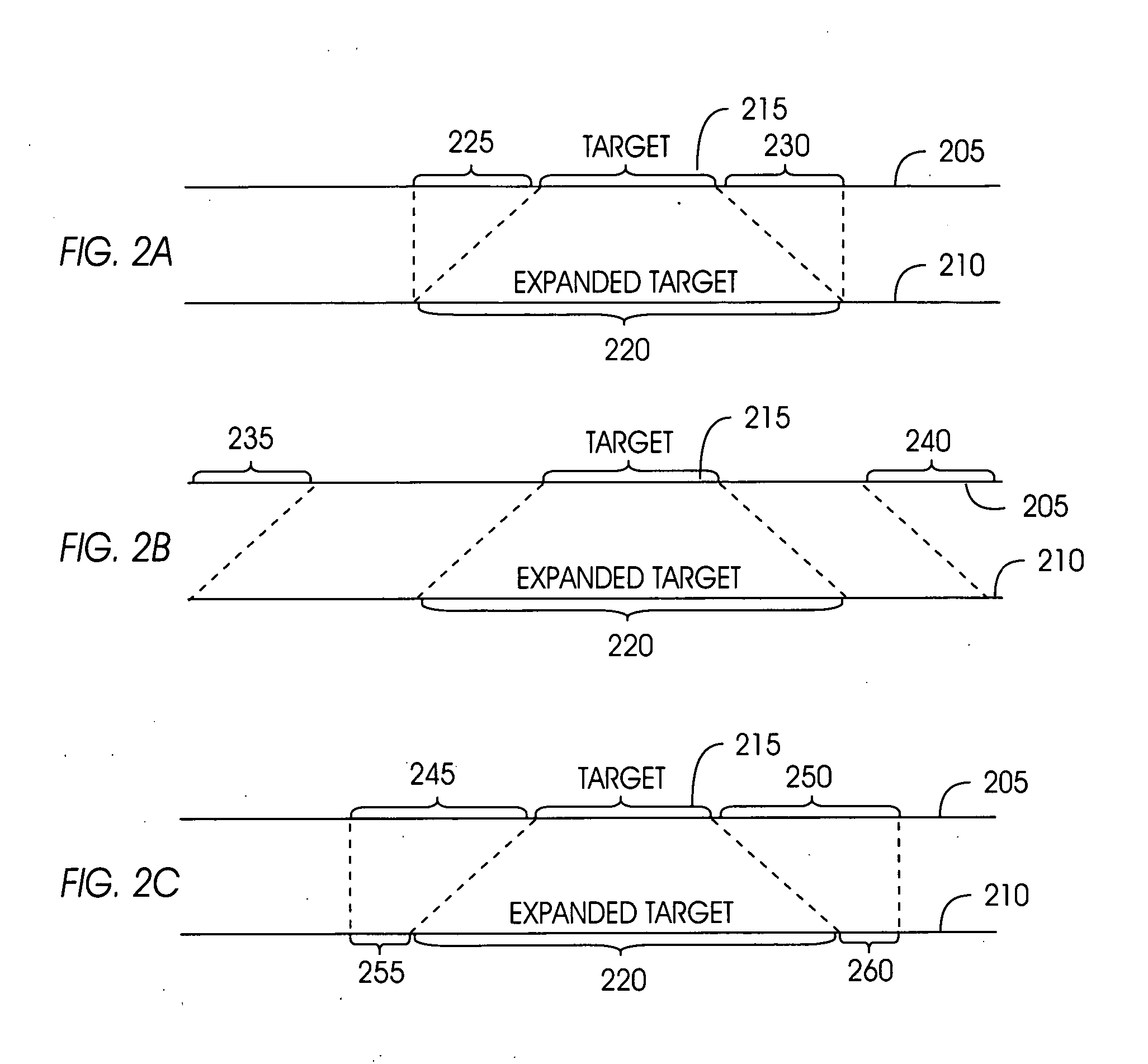System and method for selectively expanding or contracting a portion of a display using eye-gaze tracking
a technology of eye-gaze tracking and selective expansion, applied in the field of eye-gaze tracking systems and interactive graphical user interfaces, can solve problems such as display loss, and achieve the effect of reducing the loss of information or function, and increasing the ability to quickly acquire or click on target objects
- Summary
- Abstract
- Description
- Claims
- Application Information
AI Technical Summary
Benefits of technology
Problems solved by technology
Method used
Image
Examples
Embodiment Construction
The following definitions and explanations provide background information pertaining to the technical field of the present invention, and are intended to facilitate the understanding of the present invention without limiting its scope:
HTML document: A document marked up in HTML, a standard language for attaching presentation and linking attributes to informational content within documents.
Hyperlink: A link in an HTML document that leads to another web site, or another place within the same HTML document.
Interactive object: An object or element that accepts input from the user through typed commands, voice commands, mouse clicks, or other means of interfacing and performs an action or function as a result of the input.
Fixation: A gaze by a user's eye a particular point at a video screen.
Target: an interactive graphical element such as a button or a scroll bar hyperlink, or non-interactive object such as text which the user wishes to identify through a persistent stare.
We...
PUM
 Login to View More
Login to View More Abstract
Description
Claims
Application Information
 Login to View More
Login to View More - R&D
- Intellectual Property
- Life Sciences
- Materials
- Tech Scout
- Unparalleled Data Quality
- Higher Quality Content
- 60% Fewer Hallucinations
Browse by: Latest US Patents, China's latest patents, Technical Efficacy Thesaurus, Application Domain, Technology Topic, Popular Technical Reports.
© 2025 PatSnap. All rights reserved.Legal|Privacy policy|Modern Slavery Act Transparency Statement|Sitemap|About US| Contact US: help@patsnap.com



